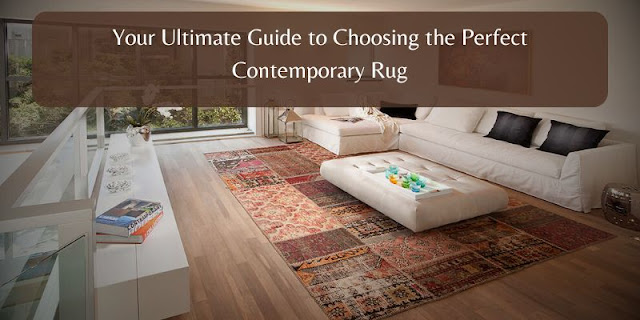Turkish Artistry at Home: Exploring the Beauty of Oushak Rugs
Décor trends often shift, yet some handcrafted pieces carry a charm that never fades. Homeowners and designers worldwide appreciate the elegance of traditional Turkish textile weaving, especially those originating from the town of Uşak. Known for their soft palettes, intricate knots, and unique hand-woven structure, these floor textiles bring a poetic character to living spaces. Their gentle motifs and time-honored weaving methods allow them to blend with classic, bohemian, rustic, and contemporary environments. Midway through this introduction, it becomes clear why enthusiasts seek oushak rugs, not just as décor items but as meaningful cultural expressions.
What Makes Turkish Uşak Weaving So Unique?
To understand why these textiles stand out, one must journey into the roots of Anatolian craftsmanship. Uşak was a central hub in the Ottoman era, recognized for its weavers who mastered dye extraction, wool processing, and knot density techniques that shaped the quality of their creations. These makers relied on vegetable-based colorants, producing calm earth tones, faded gold, muted blue, coral, and sage hues. Their color palette was not bold but soft, offering subtle sophistication instead of overwhelming patterns.
The designs often feature medallions, floral vines, and geometric ornamentation. What sets them apart is the spacious layout of motifs, providing a sense of openness on the textile surface. Unlike busy symmetrical designs found in other weaving centers, Uşak pieces leave breathing space around the central medallions. This balance of artistic detail and visual calmness allows them to enhance any room without overpowering existing décor.
Another defining element is knotting technique. Instead of prioritizing extremely high knot density, Uşak weavers focus on texture and character. The slightly coarse yet elegant feel adds personality and makes each piece visibly handmade. Time also influences the aesthetic qualities of older weavings. As dyes mature and fibers soften, the surface develops a patina that collectors highly value.
Roughly one-third into the discussion, it is worth noting how historical pieces are still admired today. Collectors treasure antique oushak rugs for their distinctive aging process, organic dyes, and cultural narrative woven into every thread.
How Uşak Pieces Elevate Interior Design
Interior design relies heavily on how textures, colors, and cultural accents influence room atmosphere. Hand-woven textiles from Uşak serve more than a functional purpose; they contribute to spatial harmony. Their faded tones offer a bridge between furniture, flooring, and wall décor, tying elements together in a subtle manner. Rather than demanding attention, they invite it gradually through understated beauty.
Key ways these Turkish creations transform interiors include:
-
Soft hues blend seamlessly with wooden, ceramic, and neutral furnishings
-
Low-contrast patterns brighten rooms without stealing focus
-
Handmade texture brings depth and authenticity to flooring
-
Traditional motifs complement both classic and minimalist spaces
-
Organic dyes age gracefully, enhancing aesthetic value over time
Their versatility makes them especially suitable for living rooms, libraries, dining areas, and cozy corners. In rustic homes, they emphasize natural textures. In contemporary spaces, they introduce warmth against sleek materials like metal or polished stone. In eclectic settings, they serve as a grounding element among mixed patterns and bold art pieces.
Styling them does not require a specific design philosophy. Whether the goal is elegance, comfort, or subtle luxury, Uşak pieces adapt effortlessly. They pair well with muted sofas, vintage wooden tables, textured throws, and light drapery. Though rooted in history, they never feel outdated because the weaving culture values balance more than trendiness.
Their craftsmanship also encourages mindful buying. Consumers become more conscious of handmade traditions, ethical fiber production, and sustainable artistry. Instead of fast-produced floor coverings that fade or wear quickly, these Turkish textiles age with grace, often becoming heirlooms passed down through generations.
Another advantage is their visual softness, which supports emotional comfort. Interiors are not only about aesthetics; they influence how people feel in their homes. Calm patterns, earthy colors, and organic materials help create serene environments where residents truly unwind. Unlike mass-produced décor items designed to mimic authenticity, Uşak weaving reflects real human skill, time, and cultural memory.
The Value of Tradition in a Contemporary Lifestyle
As global design becomes increasingly standardized through manufactured décor, handmade items remind us of cultural richness. Choosing a Turkish textile from Uşak is not just a style decision; it is an appreciation of human creativity. Younger homeowners who seek individuality in their interior spaces often gravitate toward artisan work rather than factory-made imitations.
Furthermore, today’s living spaces aim for warmth, story, and texture. People are designing their homes not merely as functional places, but as representations of their taste, identity, and heritage. Thoughtful choices such as Uşak weavings help cultivate that personality.
They also support sustainable practices. Hand-dyed fibers, natural wool, and slow-craft weaving consume fewer industrial resources. For many, this ethical value adds emotional depth to ownership. Rather than buying something disposable, they invest in cultural art.
Conclusion
Turkish Uşak weaving continues to embody harmony, subtlety, and historical depth. Its gentle patterns and artisan-based craftsmanship enrich interiors without overwhelming them, offering warmth, simplicity, and cultural heritage with every hand-tied knot. For those seeking authenticity and character in design, these timeless pieces present an enduring aesthetic that blends beautifully with evolving styles, including the appeal of modern oushak rugs, which reinterpret traditional artistry for today’s homes.




Comments
Post a Comment